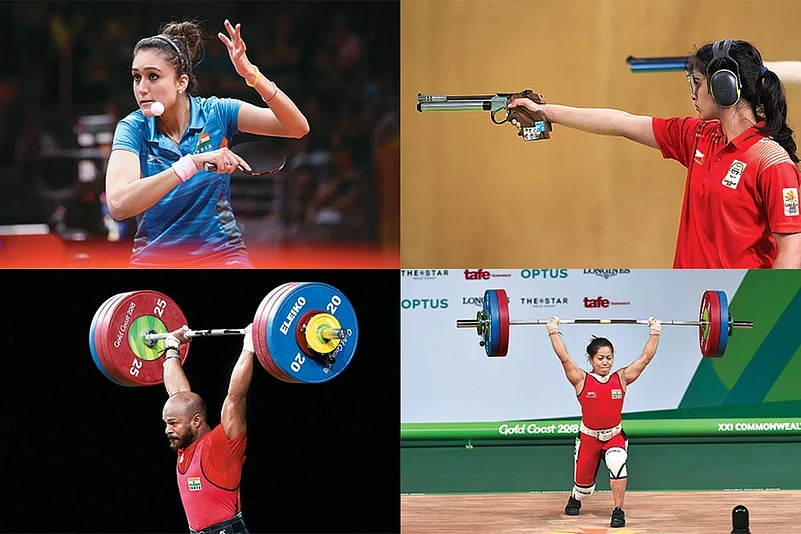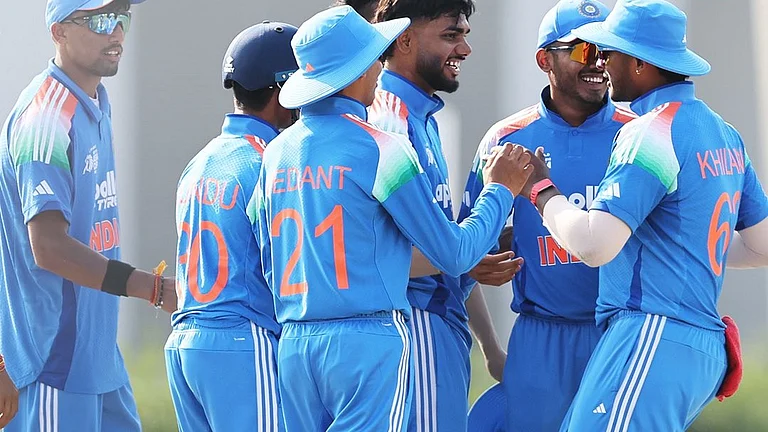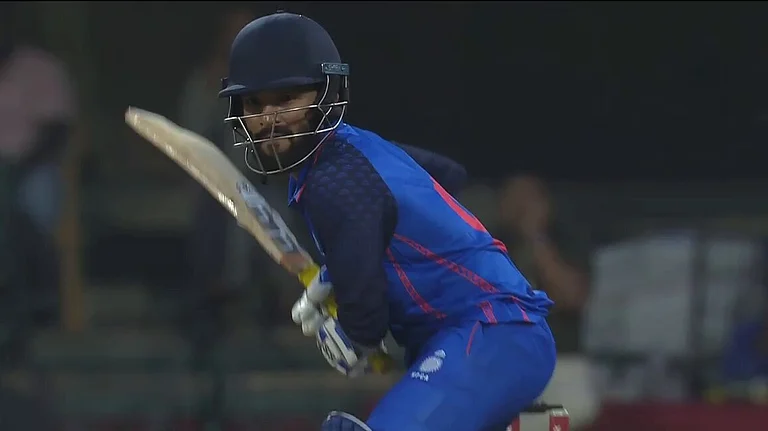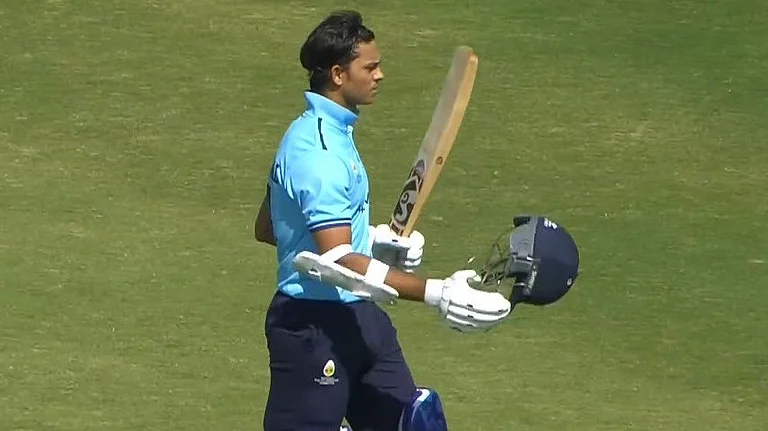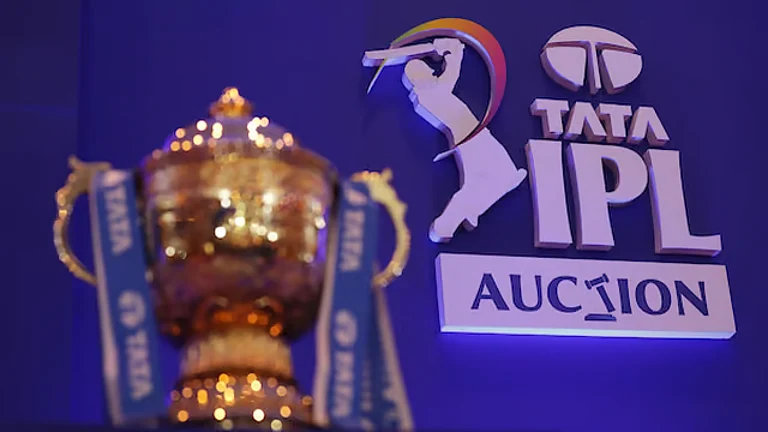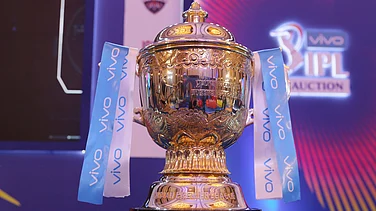In the veritable deluge of gold-tinted performances from Indian athletes at the 2018 Commonwealth Games, spare a cheer for the gallant failure of Muhammed Anas Yahiya, who came fourth in the finals of the 400-metre race in Gold Coast in Australia. In a way, this was the latest occasion of prideful despair for the Indian fan—in the 1960 Rome Olympics, Milkha Singh had lost a medal by one tenth of a second in the 400 mts; and in the 1984 Los Angeles Games, P.T. Usha’s losing the bronze by one-hundredth of a second in the 400m hurdles was even more cruel. Yahiya is the only athlete to enter the 400 mts final in a CWG after Milkha did in 1958 in Cardiff. Nonetheless, he broke his own national record with 45.31 seconds.
Meanwhile, the Indian tricolour flies high at Gold Coast. As the 12-day event creeps towards a close, India is proudly placed at the third position in the medals tally—its 12 golds so far buoyed by a few pleasant surprises. The haul includes nine medals from weightlifters alone, including five golden ones. And there is more to come in the open events that are going on now.
But even by the most optimistic yardstick, it would be well-nigh impossible for India to emulate its best-ever performance at a CWG. That high point had come at the 2010 Delhi Games, where the crucial home environment helped Indian athletes win a grand total of 101 medals. It was the only time the country had crossed the 100-mark in 15 attempts till then, and the tally included a record 38 gold, 27 silver and 36 bronze medals. India will have to bide its time to break the Delhi record in the quadrennial sports extravaganza.
That’s no reason to cavil though—it’s still a great performance by our athletes. Among the outstanding individual performers, 16-year-old shooting star Manu Bhaker, who clinched the 10m air pistol gold with unerring ease, and the two golden Chanus from Manipur in weightlifting—Saikhom Mirabai (48kg) and Khumukcham Sanjita (53kg)—got the top spot with virtuoso displays. “I was with these girls as a government observer at the Commonwealth Weightlifting Championships (CWC) last September, when we won several medals. That competition was also held at the same auditorium in Gold Coast as this CWG event. Since September, their performance has been good. I also monitored their training after the CWC, and I was sure they will win gold,” Karnam Malleswari, India’s lone Olympic weightlifting medallist, tells Outlook.
The biggest upset of the Games for India, though, was by the women’s table tennis team. In the team event, they beat Singapore, a global superpower in the game, to win gold—their first ever. And the shepherd of the sensational victory was young Manika Batra, just 22, but possessor of remarkable poise and intellect. Tall and lithe, and a mistress of subtle placement and diehard defence, the 58th ranked Manika shocked world No 4 Feng Tianwei, a multiple Olympic medallist, in the final. That win set 14th ranked India on a path to an upset 3-1 triumph over eighth ranked Singapore. In another memorable outing—and a glorious corollary to the women—the men’s team, ranked 10th, beat 32nd ranked Nigeria 3-0 in the final. Two table tennis team gold are the stuff of fantasy. “These performances are a real surprise, especially the women’s gold, because the opposition, Singapore, is a strong team and were unbeaten till now. I am very happy for the men’s team. We knew from the beginning that the men had an outside chance of winning gold.... They did fantastically well. It was a double whammy for us; a golden performance,” Kamlesh Mehta, eight-time national men’s single champion, tells Outlook.
The toast of the competition has been Bhaker, for her pressure-free, almost nonchalant excellence. The class XI student from Haryana shot a CWG record with a total of 240.9 points in the final of the 10m air pistol. Heena Sidhu and Shreyasi Singh emulated her golden feat in their respective shooting categories. “It has been a good, solid performance by our shooting team so far. It’s heartening to see young talent coming forward and taking on the best in Gold Coast. It is good for our chances of securing a strong presence at the 2020 Tokyo Olympics, as this young brigade will boost medals prospects. They seem to be enjoying themselves—a very healthy sign,” says Mansher Singh, the 1994 CWG trap gold medallist and now a coach with the Indian team, from Gold Coast.
It has been apparent for a few years that in team events, only China and Japan stood before our badminton might like a great wall. This was confirmed at the CWG, when India broke Malaysia’s monopoly in the CWG mixed team event, as the Saina Nehwal-led side registered a 3-1 upset win in the best-of-five final. However, it’s true that the badminton field in CWG is weaker without major Asian powerhouses China, Japan, and Korea. “The field is pretty light in CWG, the Chinese, the Japanese, the Danes and the Koreans are not there. It should be easy to reach the quarters and the semis in open events; after that it depends on how well you play. In the Asian Games they [barring Denmark] will take the field. In CWG, the competition is not even half as tough as the Asian Games or the World Championships. Out of top eight countries, only three—India, England and Malaysia—are playing here; the others are not up to the mark,” says Uday Pawar, a former national doubles badminton champion.
But Pawar, who formed a potent force with Prakash Padukone in doubles, is fulsome in his praise. “After the team events, the players will have to maintain concentration and make sure they are fit right till the end of the open events, especially those who have played in the team events. It’s a test of their fitness, and that’ll be an important part of how well they can do,” he points out. He expects two medals each in the men’s and women’s singles, besides the men’s and women’s doubles.
Not only badminton, competition in some other disciplines as well, including track and field, will be tougher at the Asian Games, to be held in Indonesian cities Jakarta and Palembang in August-September this year. Athletes will have to guard against false sense of superiority that might creep in with CWG successes. Another crucial factor for them will be the short gap between the CWG and the Asian Games—just four months. In this period, they will have to recover mentally and physically, and raise their game for the bigger test. Also, the athletes, coaches and administrators will have to chalk out an ideal schedule of training and competition, so that they can mount a formidable challenge.

The Indian badminton contingent exults after winning gold in the mixed team event in Gold Coast
In Gold Coast, five boxers—Amit Panghal, Naman Tanwar, Mohammed Hussamuddin, Manoj Kumar and Satish Kumar—were assured of a medal each as they reached the semi-finals in their respective weight categories. In hockey, too, both the men’s and women’s teams have done well to progress to the semi-finals. In the women’s event, India will play hosts Australia and England will clash with New Zealand. Both teams, though, had their share of scares early on. A lowly Wales shocked the women in the opening match while the men’s team squandered a 2-0 advantage against Pakistan in the opener to be held 2-2 in the last minute. Both recovered to make it to the semis; for the women, who beat the formidable English team, it was an achievement. “The loss to Wales was unpredictable and indigestible to any person who understands hockey. But the win over world No 2 England erased the loss, and now, the first target of reaching the semis has been met. In the men’s section, it was shocking to see India being held by Pakistan, which is not a good team. The real battle starts from semi-finals,” says former India women’s team coach A.K. Bansal. Interestingly, eight-time Olympic champion India has never won the Commonwealth Games men’s hockey gold, while the women have won only once, in 2002 in Manchester.
India would hope to keep its third position intact by the time the Gold Coast Games end, on April 15. But, as Pawar points out, there are tougher days ahead for our athletes in the Asian Games. CWG has 71 countries; at the Asiad, 45 nations will jostle for podium finishes, with powerhouses like China, Japan and South Korea to contend with. Fans would hope the winners at Gold Coast will cling on to their form, then climb up a notch.






